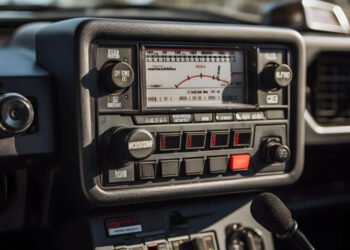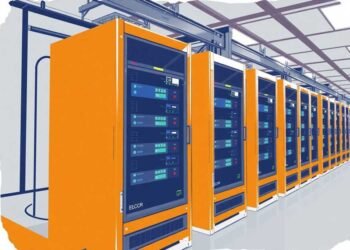Coil winding machines are essential in manufacturing various components such as transformers, motors, and inductors. Among these, heavy-duty single spindle coil winders are integral to large-scale operations where durability and precision are critical. However, with the increased complexity and power of heavy-duty machines comes a greater need for rigorous safety measures. Operators must be well-informed about potential hazards and the steps they can take to mitigate them, ensuring a smooth, productive, and safe working environment. This article explores specific safety considerations for heavy-duty single spindle coil winders.
Understanding the Coil Winder and Its Components
Before diving into safety protocols, it’s crucial to understand the key components of a coil winder and how they function. A heavy-duty single spindle coil winder typically includes the following parts:
- Spindle: The rotating axis on which the wire is wound. In heavy-duty models, these spindles are designed to handle larger coils, making them capable of high-speed winding.
- Tailstock: Supports the workpiece during the winding process, ensuring that the wire is wound correctly and evenly.
- Wire Guide Mechanism: Guides the wire onto the spindle, ensuring uniform distribution.
- Control System: Usually equipped with programmable controls to adjust the speed, tension, and number of turns based on the specific coil design.
The coil winder operates by spinning the spindle, while the wire guide precisely places the wire onto the winding form. In heavy-duty models, the forces involved are significantly higher due to the larger components and thicker wires, which makes the machine’s power and speed major safety considerations.
Risk of Mechanical Injury
The rotating spindle and moving wire guide present obvious mechanical risks, such as entanglement, crushing, or getting caught in the moving parts. Operators working with heavy-duty single spindle coil winders must be particularly cautious, as the increased torque and speed mean injuries can be more severe.
Safety Tips:
- Guarding Systems: Properly installed and maintained guarding systems around the spindle and moving parts can prevent accidental contact with these components. Guards should never be removed or bypassed during operation.
- Emergency Stops: Ensure the machine is equipped with easily accessible emergency stop buttons, allowing the operator to halt the machine immediately if a hazardous situation arises.
- Lockout/Tagout Procedures: These procedures should be in place for machine maintenance and repairs to ensure that the machine is completely de-energized before any work is done on it. This reduces the risk of accidental startup while maintenance is ongoing.
Wire Tension and Breakage Hazards
In heavy-duty applications, the wire used in coil winders is often thicker and placed under higher tension than in lighter-duty machines. This increases the risk of wire breakage, which can lead to dangerous snapback, where the broken wire recoils at high speed, potentially striking operators or bystanders.
Safety Tips:
- Proper Setup and Maintenance: Ensure that the wire tension is set according to the manufacturer’s specifications and that components like the tensioners and wire guides are properly maintained. Excessive tension can increase the likelihood of wire breakage.
- Protective Barriers: Physical barriers between the wire path and the operator can prevent injury in the event of a breakage. These barriers should be clear to allow for visibility while still providing protection.
- Personal Protective Equipment (PPE): Operators should wear safety glasses and, where necessary, other protective gear such as gloves and long-sleeved clothing to shield themselves from potential wire snapback injuries.
Electrical Safety Considerations
Heavy-duty coil winders are powered by robust electrical systems to handle their increased load capacity. This makes electrical safety another critical concern, particularly for operators and maintenance personnel. Inadequate handling of electrical components can lead to shocks, burns, or even more severe injuries.
Safety Tips:
- Proper Grounding: Ensure that the machine is properly grounded to prevent electrical shock. Regular inspections should be conducted to ensure all electrical connections are secure and that there are no frayed wires or other damage.
- Training: Only qualified personnel should perform maintenance on the electrical components of a coil winder. Improper handling or bypassing of safety interlocks and circuits can lead to severe accidents.
- Lockout/Tagout for Electrical Maintenance: When conducting electrical maintenance, it’s essential to follow proper lockout/tagout procedures to prevent accidental energization of the machine. This reduces the risk of shock or electrocution.
Handling Heavy Coils
As their name suggests, heavy-duty single spindle coil winders handle large and often very heavy coils. The weight and size of these coils present handling risks, particularly during loading and unloading. If not done correctly, this can lead to sprains, strains, or more serious injuries.
Safety Tips:
- Use of Lifting Equipment: Manual lifting should be avoided wherever possible. Instead, use cranes, hoists, or other mechanical lifting devices to move heavy coils. This minimizes the strain on the operator and reduces the risk of injury from dropping or mishandling the coil.
- Proper Coil Positioning: Ensure that coils are positioned correctly before starting the winding process. Misaligned coils can result in uneven winding, which could damage the coil or cause excessive strain on the machine, leading to potential malfunctions or accidents.
- Team Lifting: If manual lifting is required, it should always be done as a team to distribute the weight evenly and minimize strain on individual operators.
Machine Stability and Securing
Due to their size and the forces involved, heavy-duty single spindle coil winders must be securely fastened to the floor or workbench. Unstable or poorly secured machines can move or vibrate during operation, leading to accidents or poor-quality winding results.
Safety Tips:
- Anchoring: The machine should be securely anchored to the ground or mounting surface using bolts or other fasteners. This prevents movement and ensures the machine operates safely and smoothly.
- Regular Inspections: Routine inspections of the machine’s mounting points and overall structural integrity should be performed. Vibration and wear over time can loosen fasteners, so periodic tightening or adjustment may be necessary.
Machine Overload and Overheating
Heavy-duty machines are designed for large-scale operations, but like any equipment, they have limitations. Pushing a coil winder beyond its rated capacity or operating it for extended periods without proper cooling can lead to overheating, breakdowns, or even fires.
Safety Tips:
- Follow Manufacturer Guidelines: Always adhere to the machine’s capacity limits, both in terms of coil size and winding speed. Exceeding these limits can place undue strain on the motor and other components, increasing the risk of failure or accidents.
- Cooling Systems: Ensure that the machine’s cooling systems (if equipped) are functioning properly. These may include fans, vents, or other mechanisms to dissipate heat generated during operation.
- Regular Breaks: For operations that require extended use of the coil winder, make sure the machine is given adequate rest periods to prevent overheating. This is especially important for heavy-duty machines handling thick wires or large coils.
Operator Training and Awareness
One of the most significant safety considerations for heavy-duty single spindle coil winders is the training and awareness of the operators. Even the most sophisticated safety features cannot replace the importance of a knowledgeable and vigilant operator.
Safety Tips:
- Comprehensive Training: All operators should receive thorough training on the specific machine they will be using. This includes understanding its controls, safety features, and potential hazards. Refresher courses should be provided periodically, especially when new features or processes are introduced.
- Hazard Awareness: Operators should be aware of the specific hazards associated with coil winding, such as entanglement risks, wire breakage, and electrical hazards. Knowing what to look for and how to respond in case of an emergency can significantly reduce the likelihood of accidents.
- Machine-Specific Protocols: Every machine is slightly different, even within the same category of coil winders. Operators should be familiar with the specific safety protocols for the model they are using, as well as any unique features that may require special handling.
Preventative Maintenance
Routine maintenance is crucial to the safe operation of heavy-duty coil winders. A well-maintained machine is less likely to experience malfunctions that could lead to accidents or injuries.
Safety Tips:
- Scheduled Inspections: Regularly inspect the machine for signs of wear or damage. Components such as the spindle, wire guide, and tensioners should be checked to ensure they are functioning correctly.
- Lubrication and Cleaning: Ensure that moving parts are properly lubricated and that the machine is kept clean and free from debris. Dirt or dust accumulation can interfere with the machine’s operation and lead to mechanical failure.
- Replace Worn Parts: Worn or damaged parts should be replaced immediately to prevent accidents. For example, frayed wires or damaged tensioners can pose serious risks to the operator.
Conclusion
Safety considerations for heavy-duty single spindle coil winders are critical, especially given the power and complexity of these machines. By implementing comprehensive safety measures—including the use of guarding systems, proper training, and preventative maintenance—you can mitigate the risks associated with operating this type of machinery. Remember, safety is an ongoing process that requires continuous attention and commitment to ensure the well-being of everyone in the workplace.












